Things to do in Mumbai
Mumbai's countless attractions are reached via the iconic colonial-era arch that is the Gateway of India. Nearby stands the Taj Mahal Palace. India's second-most photographed monument (after its namesake) has played an integral role in the country's history. Equally imposing is the poetically named Chhatrapati Shivaji Maharaj Terminus, an extravagant Gothic building, and a UNESCO world heritage site.
Mumbai Harbour is home to Elephanta Island, a labyrinth of impressive temple carvings, while the Colaba peninsula hosts Sassoon Docks, the oldest and largest fish market in Mumbai. The peninsula is a hive of activity, with high-end fashion boutiques, souvenir craft markets, and a collection of restaurants and cafes.
Mumbai continues its theme of long names with the Chhatrapati Shivaji Vastu Sangrahalaya museum. Beneath an impressive dome, the museum houses an extensive collection of sculptures, terracotta figures, paintings and ancient weaponry. The Dr Bhau Daji Lad Mumbai City Museum is a beautiful renaissance style building housing exhibits focusing on Mumbai's history, and the Mani Bhavan Gandhi Museum celebrates the life and times of the Mahatma Gandhi
Tourists can visit the Iskcon Temple to witness scenes of intense, joyful worship accompanied by dance and music, or plan a trip to Film City to see first-hand how Bollywood shoots its films. For those seeking a break from the madness of modern Mumbai, the 180-year-old village of Khotachiwadi offers a quiet glimpse into life as it was before the high-rise buildings of today's mega-city.
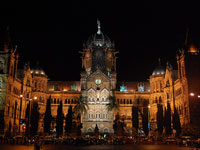
Fort Area
The magnificent Gothic Victorian buildings in Mumbai's Fort Area highlight the power and wealth of the British Empire at its might. They are reminiscent of many of the great public…
Fort Area
The magnificent Gothic Victorian buildings in Mumbai's Fort Area highlight the power and wealth of the British Empire at its might. They are reminiscent of many of the great public buildings in London or Glasgow. The Victoria Terminus (known as CST) was opened in 1888, and is one of the world's grandest railway stations, on a par with New York's Grand Central Station or London's St Pancras. Built in the Italian Gothic style, it looks more like a lavishly decorated cathedral than a railway station: massive arches soar splendidly above the scurrying crowd, and carved into the pillars and buttresses are images of monkeys, peacocks, elephants and lions.
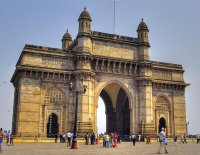
Colaba
The southernmost peninsula of Mumbai, known as Colaba, is where most travellers gravitate. It has a good range of hotels and restaurants and houses two of the city's most famous la…
Colaba
The southernmost peninsula of Mumbai, known as Colaba, is where most travellers gravitate. It has a good range of hotels and restaurants and houses two of the city's most famous landmarks: the Gateway to India and the Taj Mahal Hotel. The Gateway to India was built in 1911 to commemorate the visit to India of King George V and Queen Mary. The archway is built from honey-coloured basalt in a style derived from Gujarati architecture of the 16th century. In the days of the steam liner, the Gateway was for many visitors their first and last sight of India, but today it acts purely as a colourful tourist stop, and attracts hawkers, snake charmers, and beggars.
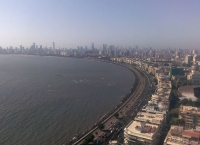
Marine Drive
Built in the 1920s, Marine Drive runs along the shoreline of the Arabian Sea, from Nariman Point to the foot of Malabar Hill. It is Mumbai's most famous thoroughfare, and a favouri…
Marine Drive
Built in the 1920s, Marine Drive runs along the shoreline of the Arabian Sea, from Nariman Point to the foot of Malabar Hill. It is Mumbai's most famous thoroughfare, and a favourite spot for watching the sunset. Lined on the landward side by a crescent of crumbling Art Deco buildings, it is lit up memorably at night, prompting travel agents to dub it 'the Queen's Necklace'. At the top end of Marine Drive is Chowpatty Beach, the only beach in the central part of Mumbai. Though not ideal for sunbathing or swimming, it is a popular (though hectic) place to spend an afternoon, surrounded by beach traders, entertainers and beggars.
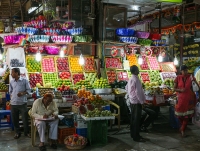
Crawford Market
The colourful indoor Crawford Market (Mahatma Jyotiba Phule Market) is where locals of central Mumbai go shopping for their fruit, vegetables and (for the brave) meat. Rudyard Kipl…
Crawford Market
The colourful indoor Crawford Market (Mahatma Jyotiba Phule Market) is where locals of central Mumbai go shopping for their fruit, vegetables and (for the brave) meat. Rudyard Kipling was born just south of the market, in 1865. An ornate fountain designed by his father, Lockwood Kipling, sits between old fruit boxes at the market's centre. He also designed the frieze depicting Indian peasants in wheat fields that hangs above the main entrance. Visitors can find almost anything at the market, which is large and full of surprises, and will enjoy a stroll around the narrow lanes of Kalbadevi, north of the market.
Website www.crawford-market.com/
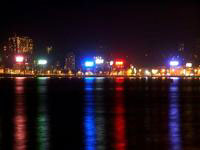
Mumbai
Mumbai (formerly Bombay) is India's economic powerhouse, and home to more millionaires than any other city on the Indian subcontinent. The city contains a breathtaking array of Hig…
Mumbai
Mumbai (formerly Bombay) is India's economic powerhouse, and home to more millionaires than any other city on the Indian subcontinent. The city contains a breathtaking array of High Victorian buildings, reflecting the British passion for the Gothic and demonstrating the wealth, panache and confidence of British Bombay. Mumbai's countless attractions are reached via the iconic colonial-era arch that is the Gateway of India. Nearby stands the Taj Mahal Palace, India's second most-photographed monument, and the equally imposing Chhatrapati Shivaji Maharaj Terminus, an extravagant Gothic building. For those seeking a break from the madness of modern Mumbai, the 180-year-old village of Khotachiwadi offers a quiet glimpse into life as it was before the high-rise buildings of today's mega-city.
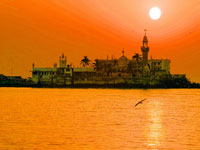
Haji Ali Dargah
The Haji Ali Dargah is both a mosque and a tomb, located in southwestern Mumbai, on an islet off the coast of Worli. The dargah (tomb) was built in memory of Muslim preacher Syed P…
Haji Ali Dargah
The Haji Ali Dargah is both a mosque and a tomb, located in southwestern Mumbai, on an islet off the coast of Worli. The dargah (tomb) was built in memory of Muslim preacher Syed Peer Haji Ali Shah Bukhari in 1431, who was inspired to change the course of his life after embarking on the Hajj to Mecca. Haji Ali is only accessible by a 1500-foot (457m) walkway during low tide. The walkway is generally lined with beggars and vendors, and Thursdays and Fridays see thousands of pilgrims flocking to Haji Ali to receive blessings from the dead saint.
Website www.hajialidargah.in/
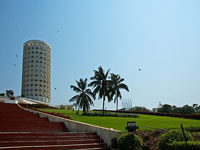
Nehru Centre
The exciting Nehru Centre features a world-class planetarium, an art gallery filled with emerging talent, and an interesting culture wing. However, the highlight of the centre is t…
Nehru Centre
The exciting Nehru Centre features a world-class planetarium, an art gallery filled with emerging talent, and an interesting culture wing. However, the highlight of the centre is the (permanent) Discovery of India exhibition, with consists of 14 galleries showcasing every aspect of artistic, intellectual and philosophical attainment in India through the ages; visitors walk through the history of India from ancient times to independence. This is a wonderful place to start for those looking to get to grips with the history and identity of India, one of the most mercurial and fascinating countries in the world.
Website www.nehru-centre.org
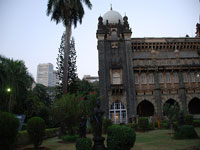
Prince of Wales Museum
The Prince of Wales Museum, now officially known as the Chhatrapati Shivaji Maharaj Vastu Sangrahalaya, was founded in the early 20th century to commemorate the visit of (eventual …
Prince of Wales Museum
The Prince of Wales Museum, now officially known as the Chhatrapati Shivaji Maharaj Vastu Sangrahalaya, was founded in the early 20th century to commemorate the visit of (eventual King of the United Kingdom) George V. The museum houses more than 50,000 exhibits of ancient Indian history, as well as artefacts from other lands. The museum's greatest areas of focus are art, archaeology and natural history. The Indus Valley Civilisation section is particularly impressive. The museum is surrounded by a lovely garden, which provides a nice area to stroll in after exploring the exhibitions.
Website www.csmvs.in/
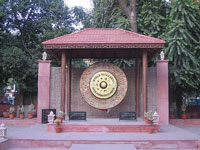
Mani Bhavan Gandhi Museum
The former home of Mahatma Gandhi, the Mani Bhavan Gandhi Museum is a Gujarati-style house featuring three floors for visitors to explore. The house did not belong to Gandhi but se…
Mani Bhavan Gandhi Museum
The former home of Mahatma Gandhi, the Mani Bhavan Gandhi Museum is a Gujarati-style house featuring three floors for visitors to explore. The house did not belong to Gandhi but served as his home and headquarters in Bombay for 17 eventful years between 1917 and 1934; it belonged to a friend of his, who was his host whenever he visited the city. Several important events and activities in Gandhi's political life took place or were initiated at this place. The museum houses an incredible library, full of Gandhi-related books, periodicals, photographs, posters and even the great man's old charkha (spinning wheel).
Website www.gandhi-manibhavan.org
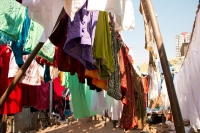
Dhobi Ghat
Known as the 'world's largest laundromat', the Dhobi Ghat provides a scene many travellers might have already seen in movies. Every day, thousands of dhobis (laundry washers) colle…
Dhobi Ghat
Known as the 'world's largest laundromat', the Dhobi Ghat provides a scene many travellers might have already seen in movies. Every day, thousands of dhobis (laundry washers) collect dirty laundry and descend upon the concrete washing areas, all fitted with their own flogging stones, to wash the garments. To the dhobis themselves, the washing and drying of clothes is a menial task but, to inquisitive tourists, this practise can be a fascinating insight into India's daily life, as well as a surviving relic of old India. The job is traditionally hereditary, and many of the men at work have families that have been doing the same job, and using the same age-old techniques, for generations.
Website www.dhobighat.in/
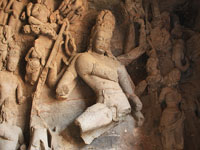
Elephanta Caves
Located on Elephanta Island in the Arabian Sea off the coast of Mumbai, the Elephanta Caves are a UNESCO World Heritage Site and an absolute must for visitors to Mumbai. The island…
Elephanta Caves
Located on Elephanta Island in the Arabian Sea off the coast of Mumbai, the Elephanta Caves are a UNESCO World Heritage Site and an absolute must for visitors to Mumbai. The island can be reached by an hour-hong boat ride from the Gateway of India pier. The caves feature Shaivistic (the oldest of the four sects of Hinduism) stone sculptures of Hindu deities important to worshippers of Shiva. Unfortunately, the Portuguese defaced many of the sculptures in the caves when they used them for target practice in the 17th century. However, there is still a lot of intricate and impressive art to see.
Website www.elephanta.co.in/how-to-reach-elephanta-caves
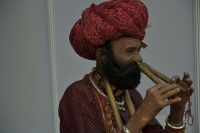
Kala Ghoda Bazaar
For three months, between November and January each year, street musicians and performers of all kinds add to the colourful atmosphere of Mumbai's Sunday street bazaars, held near …
Kala Ghoda Bazaar
For three months, between November and January each year, street musicians and performers of all kinds add to the colourful atmosphere of Mumbai's Sunday street bazaars, held near the Jehangir Art Gallery in the city's pedestrian plaza. The area becomes a hive of activity and excitement, with cultural performances and stalls selling a variety of crafts, folk art and food. The stretch has become such a hub of cultural and artistic activity that it is now known as an art precinct all year round. The Kala Ghoda Art Precinct stretches from Regal Circle at the southern end of Mahatma Gandhi Road to Mumbai University, which is further north on the same street.



